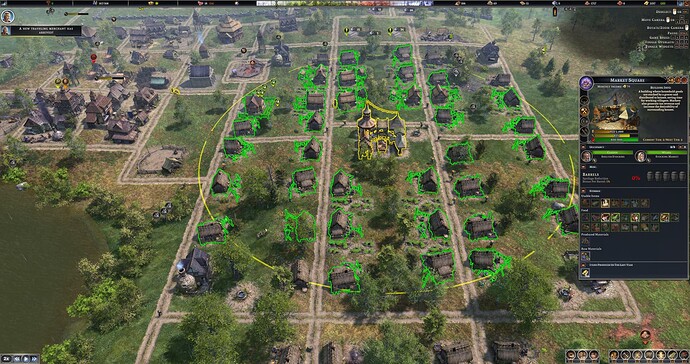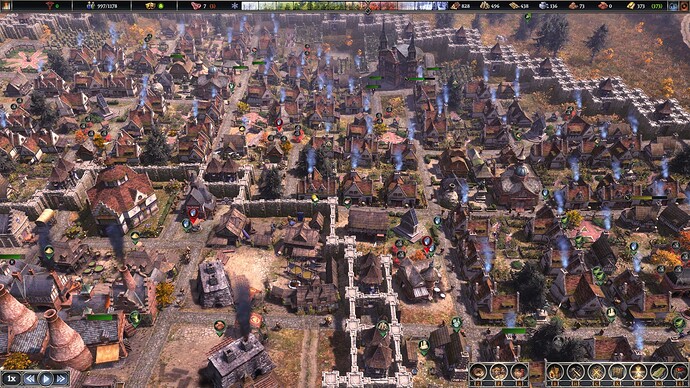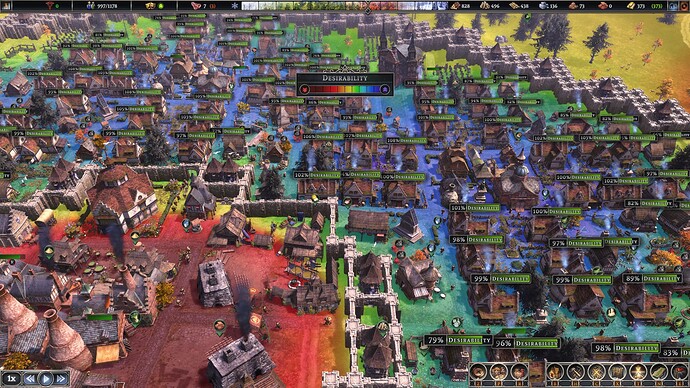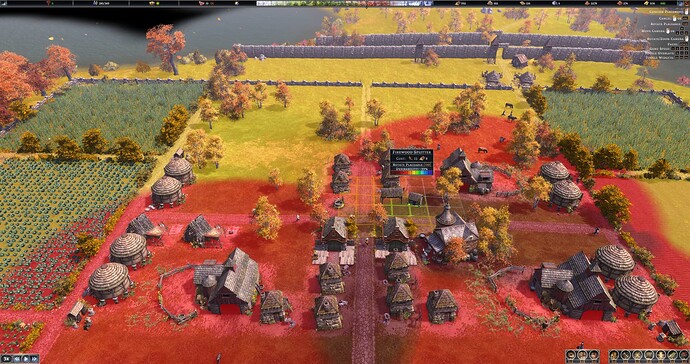A population of almost 500 with 18 (2) months of food stored.
The sixth field (back left) was just starting to come online and hadn’t started producing yet.
I run two Filed Mainenance blocks and one Clover for the first two years, then two Clovers for the third season.
All weeds and rocks are eliminated plus a big fertility boost prior to planting crops in a new field helps production.
Hoping to someday get to a point where all of this and the town are enclosed in proper walls with towers.
Keeping the farming and pastures together allowed me to centralize the storage and processing units for the products they make.
My Smokehouses, Granaries the Cheesemaker and several Root Cellars dedicated to raw goods only are all right there, close to where their materials come from.
The Windmills all have straight-shot runs to the Granaries but are not so close as to burn through all the wheat making flour, leaving the cows to starve in the winter.
The Smokehouses all have straight-shot runs to firewood supplies, so stocking the Smokehouse isn’t a constant chore.
The setup works pretty efficiently and lets very little of the raw goods out into the marketplace, reducing the number of Shelter Stocking runs workers need to make.
With the sixth Farm field online and all four of the Barns full of healthy cows milking enabled, I think I can get close to a 750 population and still have plenty of food stored.
These were 10x10 Farm Fields and Barn pastures, prior to the latest update.
45x34 was the actual size including roads and perimeter fencing.
The upgrade to 12x12 pastures has added 44 new spaces to the central works area that I’m noodling around with on a new map.
Not really sure if shelf life is actually improved by the quick transport to storage, but for goods that don’t last a year unless preserved I try to get every boost and benefit that I can.
The 12-field setup in 12x12 blocks is going to be truly enormous @ 53x40.





 )
)

